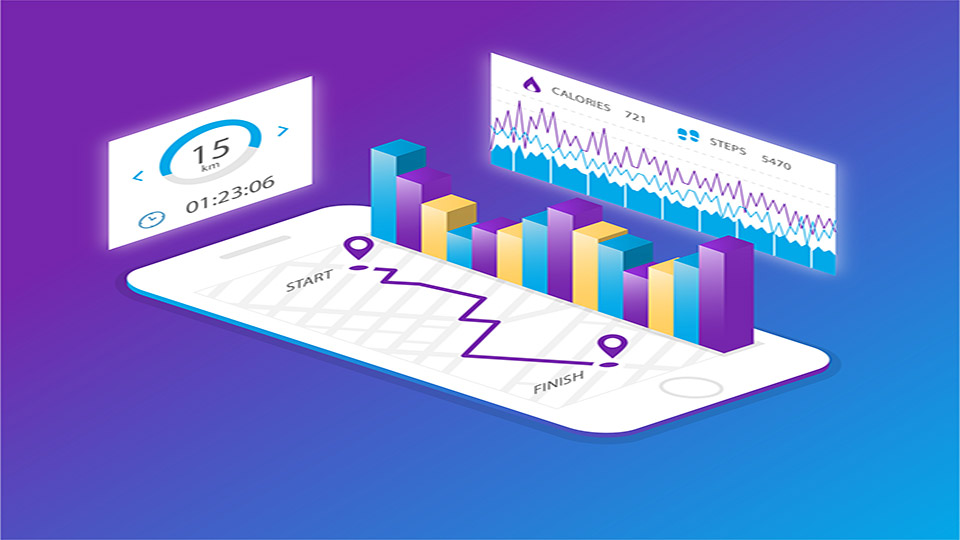The market survey response rate is an amazing tool for gathering insights and feedback from your target audience.
However, even the most thoughtfully crafted survey will be ineffective if it fails to generate a high market research survey response rate.
A low-quality market research survey can skew your results and lead to incomplete or inaccurate data.
To ensure that your market survey is successful, you need to focus on maximizing your market survey response rates.
In this article, we will explore some effective strategies and best practices that can help you achieve that goal.
Keep Your Survey Short and Sweet.
One of the most significant factors that influence market survey response rates is the length of the survey. Long, time-consuming surveys are likely to be met with resistance and disinterest, and respondents may abandon them before completion.
Keep your survey short and to the point, asking only the most critical questions. Avoid any unnecessary or extraneous questions that do not contribute to your research goals.
Shorter surveys will help to increase market research response rates, as they are easier to complete and require less time commitment.
Provide an incentive
Offering an incentive can be a powerful motivator for increasing market survey response rates.
Consider providing an incentive to respondents as a token of appreciation for their participation.
The incentive need not be extravagant, but it should be something that is meaningful and valuable to your target audience. Examples of incentives include gift cards, discounts, or free trials of your products or services.
Use Multiple Channels
Using multiple channels to distribute your survey can help increase response rates. Consider using email, social media, or even SMS to reach out to your target audience.
Be sure to use targeted messaging that speaks to the unique needs and interests of your audience.
Using multiple channels will help to ensure that your survey reaches the widest possible audience and increase your chances of receiving a higher response rate.
Personalize your survey
Personalization is another powerful motivator for increasing
Market survey response rates Address respondents by name and use personalization tokens to tailor your questions to their unique interests and preferences. Personalized surveys show that you value your respondents and appreciate their time and effort. This personal touch can go a long way towards increasing response rates and generating
Follow-Up
Following up with respondents is an essential component of maximizing market survey response rates.
Send a thank you note or email to respondents who have completed your survey, and provide them with a summary of the results once the research is complete. Respondents are more likely to participate in future surveys if they feel valued and appreciated. Following up also provides an opportunity to address any issues or concerns that respondents may have had, helping to improve your survey for future iterations.
In conclusion, maximizing market survey response rates is critical for generating accurate
and valuable data from your target audience. By keeping your survey short and sweet,
providing an incentive, using multiple channels, personalizing your survey, and following up, you can increase your chances of receiving a higher response rate.
These best practices can help you to gather insights and feedback that can inform critical business decisions
and improve the overall success of your organization.
ERTC is a member of several international professional organizations of public opinion and survey research, including WAPOR, AAPOR, and ESOMAR,
and the implementations of Federal Wide Assurance standards have become an integral element in ERTC research activities.
Our team of experts has years of experience conducting research and providing valuable insight to clients.
We ensure that our surveys are tailored to meet your specific needs and provide you with actionable recommendations.
Definition of market survey response rates
and their importance

Market Survey Response Rates refer to the percentage of people who complete a survey in response to an invitation to participate.
Response rates are an important measure of the effectiveness of a market survey because they directly affect the accuracy and representativeness of the data collected.
Higher response rates generally lead to more reliable data, as the responses are likely to be more representative of the overall population being studied.
A low response rate, on the other hand, can lead to bias and potentially inaccurate results, as those who do respond may not be representative of the entire population being studied. Additionally,
market research survey response rates can also impact the overall cost and time required to conduct a survey.
Low response rates may require additional recruitment efforts, such as offering incentives or targeting specific groups, which can add to the cost and time required to collect the desired data.
The importance of market survey response rates
Market Survey Response Rates: Response rates are important because they provide insight into the level of engagement and interest of a target audience in a particular product or service.
A low response rate may indicate that the survey questions were not relevant or interesting to the target audience, while a high response rate may indicate a strong level of interest or engagement with the topic being surveyed
Evaluating the representativeness of public opinion surveys One way to assess the representativeness of public opinion surveys is by examining the sampling method used.
Another important factor to consider is the response rate, as low response rates can lead to biased results. are important for several reasons:
1-Accuracy of Data: High response rates help to ensure that the data collected is accurate and representative of the target population being studied. This is important for making informed business decisions based on reliable data.
2-Cost-Effectiveness: Higher response rates can reduce the overall cost of the survey.
As fewer resources are needed to reach the desired sample size. This is important for organizations with limited budgets.
3-Increased Credibility: High market research survey response rates increase the credibility of the survey
and the organization conducting it. This can lead to increased trust and confidence in the organization from its stakeholders.
4-Better Insights: High response rates can lead to better insights and more actionable results.
This is because a larger sample size increases the likelihood of uncovering significant trends or patterns in the data.
5-Improved Decision-Making: Ultimately, high response rates can lead to improved decision-making.
This is because the data collected can be used to make more informed and effective business decisions, which can lead to increased profitability and growth.

Factors Affecting Response Rates
To better understand the latest trends and consumer preferences the fresh market survey was conducted among a representative sample of consumers across the United States.
The survey aimed to identify the factors that influence consumers’ purchasing decisions. Factors Affecting Market Survey Response Rates:
1-Survey length and complexity: Longer and more complex surveys can reduce response rates, as respondents may become overwhelmed or lose interest.
2-Survey topic: Survey topics can affect response rates, as respondents may be more or less interested in certain topics.
3-Timing and frequency: The timing and frequency of the survey can impact response rates.
As respondents may be more likely to respond at certain times of the day or week, or when reminded multiple times.
4-Incentives: Offering incentives, such as discounts or prize drawings, can increase response rates by providing additional motivation for respondents to complete the survey.
5-Communication methods: The communication method used to distribute the survey can affect response rates, as certain methods may be more effective or appealing to certain respondents.
Best Practices for Designing Surveys
Designing effective market surveys is a critical aspect of gathering useful and accurate data for research, analysis, and decision-making.
Here are some best practises to consider when designing market surveys:
1. Define the survey’s objectives: Clearly identify the goals of your survey, the questions you want to answer,
and the audience you want to target.
2-Keep the survey brief and focused. Avoid asking too many questions or including irrelevant ones.
Keep the survey concise and focused on the topics that matter most.
3-Pretest the survey: Test the survey with a small group of respondents to identify any potential issues or areas that need improvement before administering it to a larger group.
4-Provide clear instructions: Clearly communicate to respondents how to complete the survey and what to do if they have questions or concerns.
By following these best practices, you can design surveys that are effective, efficient, and provide valuable data for your research or decision-making needs.
Tips for Increasing Response Rates
Here are some tips for increasing market research survey response rates:
1-Keep it short and simple: Short and simple market Survey Response Rates are more likely to be completed by respondents. Avoid asking too many questions, and make sure the questions are clear and easy to understand.
2-Provide clear instructions: Provide clear instructions on how to complete the survey, including how long it is expected to take and how to submit it.
3-Use an engaging subject line: Use an engaging subject line in your invitation email or survey link to catch the respondent’s attention and increase the likelihood of them clicking on the survey link.
4-Personalize the invitation: Personalize the invitation by addressing the respondent by name and including any relevant details, such as their previous purchases or interests.
5-Offer incentives: Offer an incentive such as a discount or prize draw to increase motivation for completing the survey.
6-Communicate the survey purpose and importance: Clearly communicate the purpose and importance of the survey to increase the market research survey response rates and motivation for completing it.
7-Use multiple communication channels: Use multiple communication channels, such as email, social media, and direct mail to reach a wider audience and increase the chances of respondents seeing the survey invitation.
8-Follow up with reminders: Follow up with reminders to non-respondents to increase
the response rate. Send a reminder email or message a few days after the initial invitation.
10-Test the survey: Test the survey with a small group of people before sending it out to ensure that it is clear, concise, and easy to understand.
Strategies for Improving Response Rates
Here are some specific strategies for improving Market Survey Response Rates:
1-Timing and Frequency: Send the survey invitation at a time when respondents are most likely to be available and willing to participate. Such as during normal business hours. Also, consider sending reminders to non-respondents after a few days to increase response rates.
2-Personalization: Personalize the market research survey response rates invitation by addressing the respondent by name and including any relevant details, such as their previous purchases or interests. This can help to make the invitation feel more personal and increase the likelihood of participation.
3-Survey Design: Make the survey design visually appealing and easy to navigate. Use clear and concise language, and avoid using technical jargon or complicated questions. Test the survey with a small group of people before sending it out to ensure that it is clear, concise, and easy to understand.
4-Incentives: Offer an incentive such as a discount or prize draw to increase motivation for completing the survey. This can help to increase response rates, especially if the incentive is relevant and valuable to the target audience.
5-Communication Channels: Use multiple communication channels, such as email, social media, and direct mail to reach a wider audience and increase the chances of market research survey response rates.
6-Survey Length: Keep the survey short and focused. A long and complex survey can reduce response rates, as respondents may become overwhelmed or lose interest.
7-Survey Topic: Choose a survey topic that is relevant and interesting to the target audience. Respondents are more likely to participate if they perceive the survey as relevant and important.
8-Survey Branding: Brand the survey with your company’s logo and colors to make it more recognizable and increase the credibility of the survey.
Analyzing and Interpreting Response Rates
Analyzing and interpreting Market Survey Response Rates is important to ensure that the data collected is accurate, and representative. And useful for making informed business decisions. Here are some steps to follow when analyzing and interpreting response rates:
1-Calculate the response rate: The first step is to calculate the market research survey response rates, which is the percentage of people who responded.
To the survey out of the total number of people who were invited to participate. Response rates can vary depending on the survey topic, audience, and distribution method.
2-Assess representativeness: The next step is to assess the representativeness of the data.
A high response rate does not necessarily guarantee that the data is representative of the entire population being studied. Analyze the characteristics of the respondents to ensure that they are similar to the population being studied.
3-Check for non-response bias: Non-response bias occurs when those who choose not to respond are systematically different from those who do respond.
Check for non-response bias by comparing the characteristics of respondents and non-respondents.
4-Analyze trends and patterns: Analyze the trends and patterns in the data to identify key insights and opportunities. Look for patterns in responses to different questions and identify any correlations or trends that emerge.
5-Compare results to benchmarks: Compare the results of the survey to benchmarks, such as industry standards or previous market research survey response rates. To identify areas of improvement, and to gain a better understanding of how the organization is performing.
6-Communicate results: Communicate the results of the survey to key stakeholders and decision-makers.
Use visual aids, such as charts and graphs, to help communicate the data effectively.
The importance of market survey response rates
Market Survey Response Rates are important for several reasons:
1-Accuracy of Data: High response rates help to ensure that the data collected is accurate and representative of the target population being studied.
This is important for making informed business decisions based on reliable data.
2-Cost-Effectiveness: Higher response rates can reduce the overall cost of the survey.
As fewer resources are needed to reach the desired sample size.
This is important for organizations with limited budgets.
3- increase the credibility of the survey and the organization conducting it.
This can lead to increased trust and confidence in the organization from its stakeholders.
4-Better Insights: High response rates can lead to better insights and more actionable results.
This is because a larger sample size increases the likelihood of uncovering significant trends or patterns in the data.
5-Improved Decision-Making: Ultimately, high response rates can lead to improved decision-making.
This is because the data collected can be used to make more informed and effective business decisions,
which can lead to increased profitability and growth.
Strategies for Improving Response Rates

Here are some effective strategies for improving market research survey response rates:
1-Personalize the survey: Address the respondent by name and use personalization in the survey invitation. This can help to increase the likelihood of participation and make the survey feel more relevant and important.
2-Make the survey easy to complete: Keep the survey short and focused, use clear and concise language, and make the survey easy to navigate.
This can help to reduce survey fatigue and increase the likelihood of completion.
3-Use multiple communication channels: Use a variety of communication channels, such as email, and social media.
And direct mail, to reach a wider audience and increase the chances of respondents seeing the survey invitation.
4-Offer incentives: Offer an incentive such as a discount or prize draw to increase motivation
for completing the Market Survey Response Rates.
This can help to increase response rates, especially if the incentive is relevant and valuable to the target audience. 5-Send reminders: Send reminders to non-respondents after a few days to increase response rates.
This can help to increase the likelihood of completion by keeping the survey invitation top of mind.
6-Optimize the timing: Send the survey invitation at a time when respondents are most likely to be available and willing to participate. Such as during normal business hours.
This can help to increase response rates by ensuring that respondents have the time and energy to complete the survey.
7-Test the survey: with a small group of people before sending it out to ensure that it is clear,
concise, and easy to understand.
This can help to identify any issues with the survey design or questions .that may be causing confusion or reducing response rates.
Measuring and Evaluating Success
Learn how to create effective surveys by establishing benchmarks and goals, monitoring response rates, and iterating survey design for continuous improvement:
Why is monitoring response rates important?
Response rates are a critical indicator of the success of your survey.
Low response rates can lead to biased results and make it difficult to draw meaningful conclusions from your survey data.
By monitoring response rates, you can identify potential problems and take corrective actions to improve response rates.
How to monitor response rates:
Set a response rate goal: Determine what response rate you want to achieve
and set it as a goal for your survey.
1-Use survey software with response rate tracking: Many survey software tools provide response rate tracking, which allows you to monitor response rates in real-time.
2-Send reminder emails: Send reminder emails to those who haven’t responded to your survey yet.
Be sure to space out your reminders to avoid annoying your respondents.
3-Analyze response rates by demographic: Analyzing response rates
by demographic can help you identify which groups are responding more or less and adjust your survey strategy accordingly.
Conclusion
- Recap of key points
- Call to action for implementing strategies and best practices
- Acknowledgment of the ongoing nature of survey design and delivery, Read more about Market Survey Response Rates
Maximizing Market Survey Response Rates is essential for obtaining accurate,
and representative data that can be used to make informed business decisions.
To increase market research survey response rates, organizations can personalize the survey,
make it easy to complete, use multiple communication channels, offer incentives, send reminders,
optimize timing and test the survey with a small group of people before sending it out.
Click below and will contact you to discuss your requirements.
Share via:


